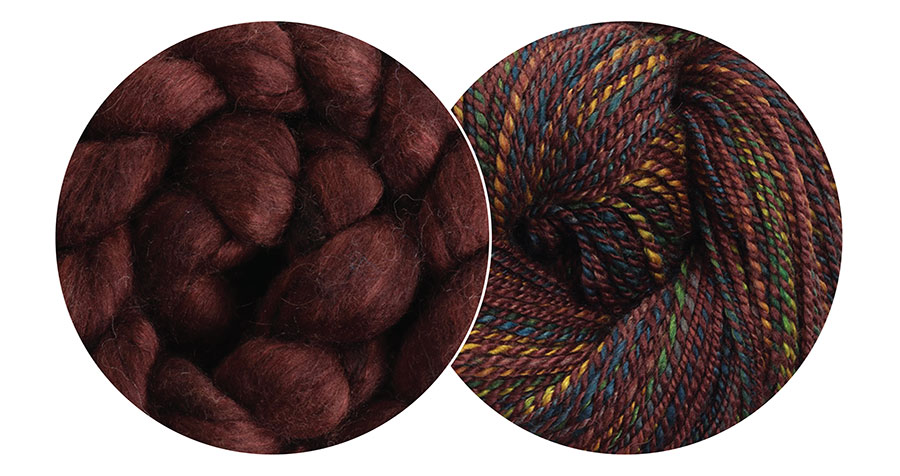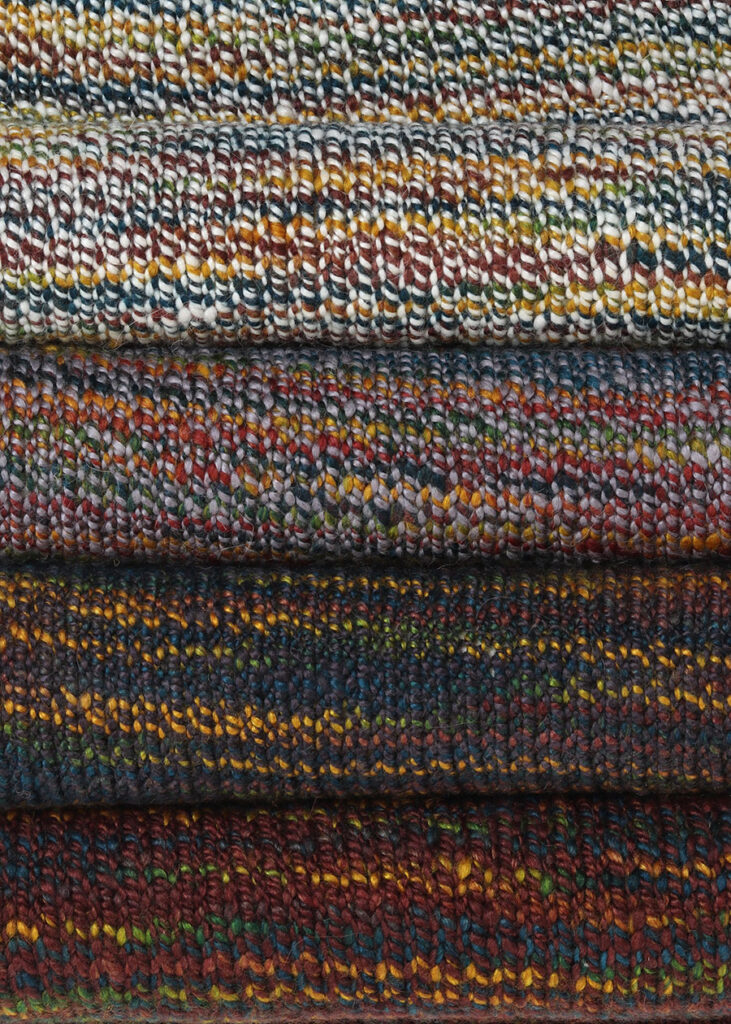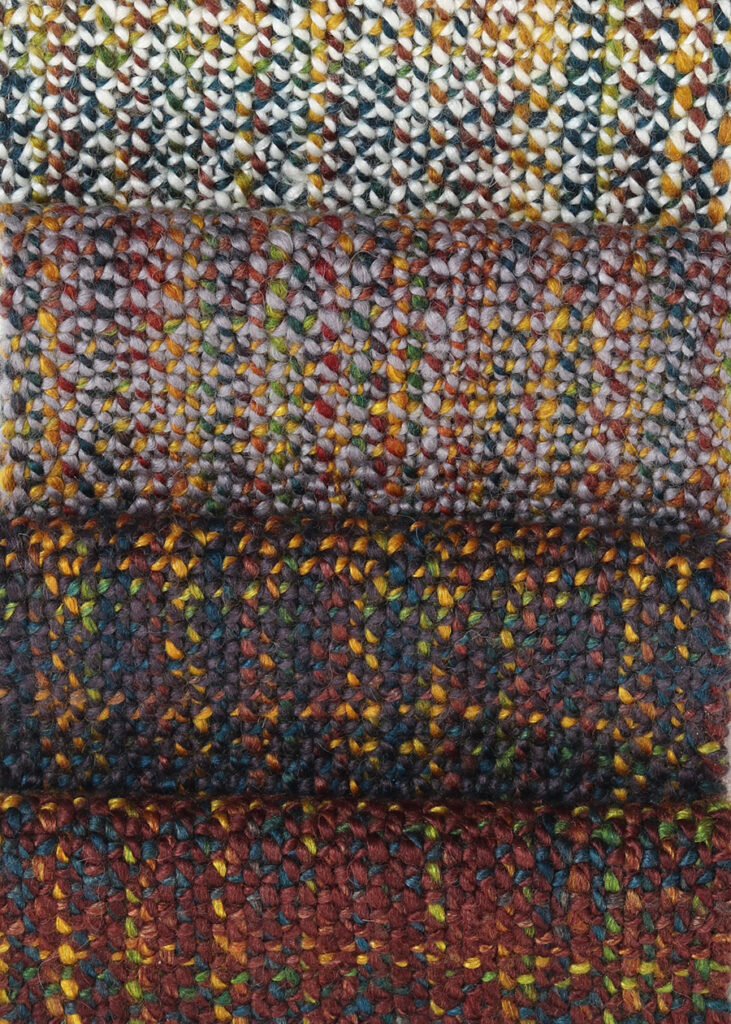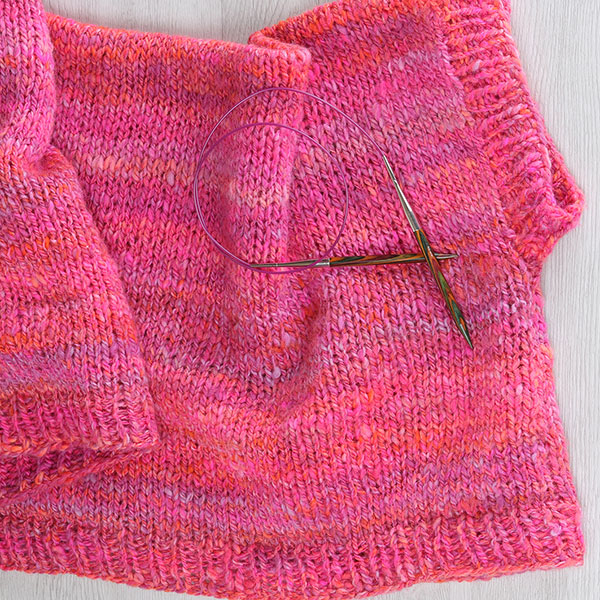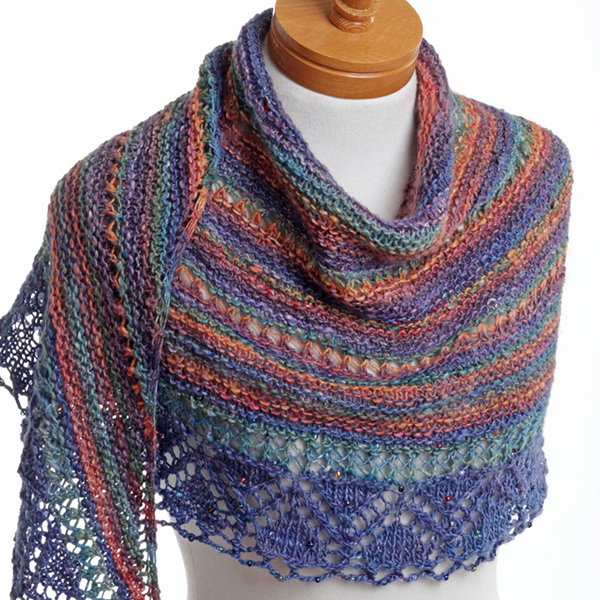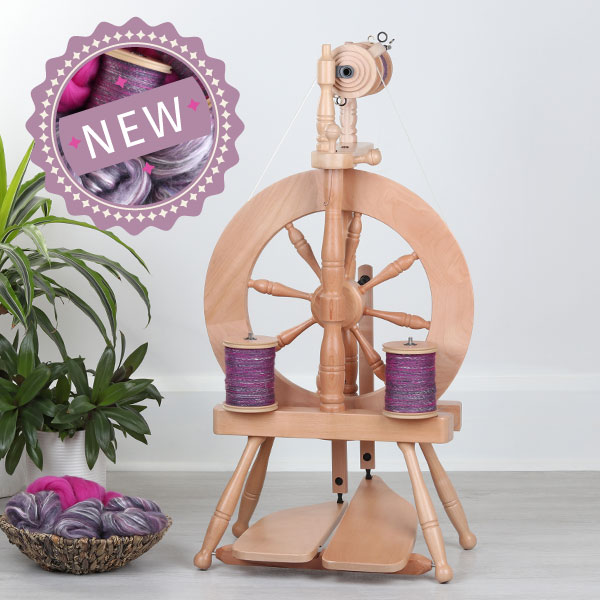
The challenge of colour management – Part 1
Hand-dyed fibre braids are irresistibly beautiful — rich in colour, texture, and creative potential. Yet working with them can often feel like a gamble. Those vibrant tones that looked so promising in the braid may pool awkwardly or blend into a muddled mix when spun, knitted, or woven.
So how can the brilliance of these colours be preserved without overpowering a final project? Find out how in this blog post.
Happy spinning!

TONE MATCHING PLY TECHNIQUE
Dyed tops come in a variety of styles — from bold variegated braids to gentle gradients and semi-solids. Each presents unique challenges when it comes to achieving colour harmony in the finished fabric. One technique that consistently produces reliable and visually pleasing results is to ply the dyed single with a neutral.
This method helps balance out intense colour shifts while maintaining vibrancy. It’s a simple, effective strategy.
Our beautiful hand dyed braid was from Fibre2go

The technique
To test the effects, begin with a richly coloured braid — such as a Merino/silk blend in warm autumnal tones — and select neutrals in similar blends (white, black, grey, and brown work well). Here’s a step-by-step guide:
- Prepare the fibre: Unchain and shake out the dyed braid. Open up the fibres along the seam, unroll, and uncurl to make drafting easier.
- Split and spin: Divide the braid into eight sections and spin each from end to end.
- Repeat with neutrals: Do the same with each neutral braid.
- Ply: Pair the coloured single with each of the neutrals and ply them together.

What to expect
The results vary beautifully depending on the neutral used:
- Ply with white: The contrast creates a bold barber pole effect, resulting in a marled yarn where white tends to dominate. The fabric appears lighter, with muted colours and strong visual texture.
- Ply with black: This yields a deeper, more dramatic yarn. Pops of colour emerge against the dark background, creating richness and visual depth.
- Ply with brown: The result is subtle and warm, with gentle variegation. Brown softens and balances the colours, offering a cohesive and natural look.
- Ply with grey: Cooler and more subdued, grey brings out a sophisticated tone. It smooths colour transitions and creates an elegant fabric.
Keep in mind that the outcome will also be influenced by the tone and saturation of the original braid. Cooler or lighter-dyed fibre may interact differently with these neutrals.
Why it works
Plying with a neutral gives greater control over the final result. It helps maintain colour order from the braid and prevents unwanted pooling or stark contrasts. It also extends the use of precious hand-dyed fibre — a small amount goes a lot further when combined with a neutral.

Woven and knitted samples
Woven and knitted samples reveal the true magic of this technique. From bright marled effects to muted elegance, the transformation of the fibre is both practical and inspiring. Each neutral affects how the colour plays out across both warp and weft or knit stitches.
Final thoughts
For spinners looking to make the most of their hand-dyed braids, plying with neutrals offers a reliable and creative solution. It’s easy to experiment with and opens up new design possibilities, especially in spinning for specific projects like wraps, shawls, or garments.




